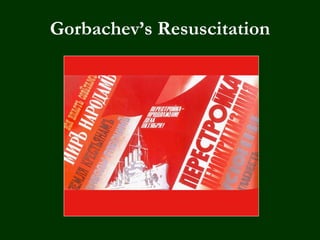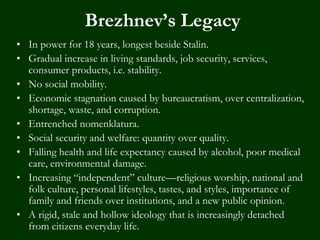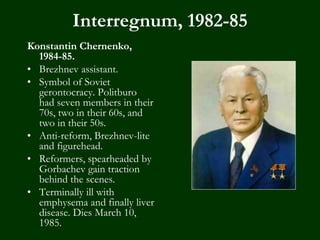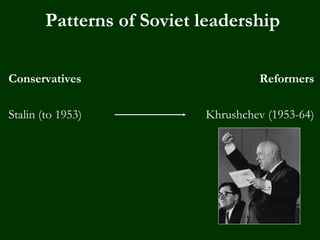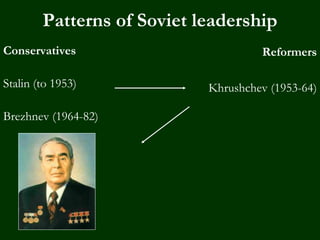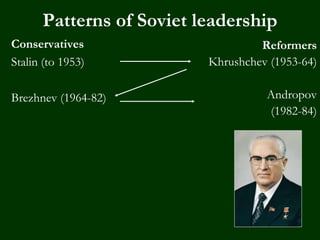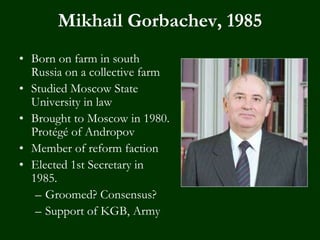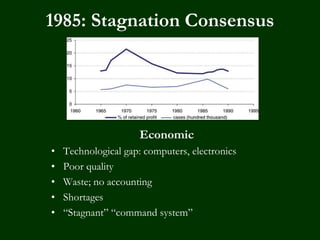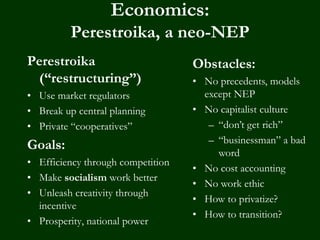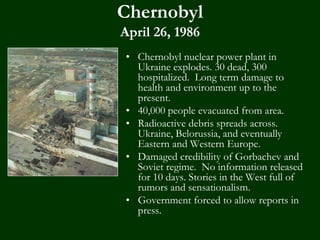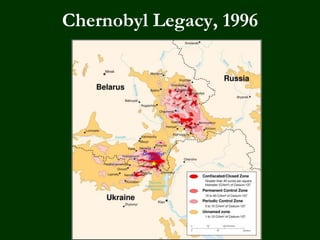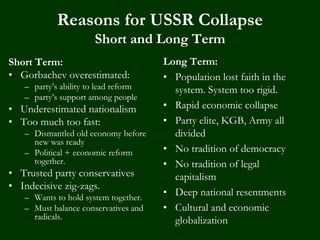The document summarizes the political and economic situation in the Soviet Union leading up to Mikhail Gorbachev becoming leader in 1985. It describes the stagnation under Brezhnev's long rule and the short interim leadership of Andropov and Chernenko. When Gorbachev came to power, he initiated reforms of glasnost (openness) and perestroika (restructuring) to decentralize the economy and limit the Communist Party's role, but this led to unrest and nationalist movements that ultimately dissolved the Soviet Union in 1991.
